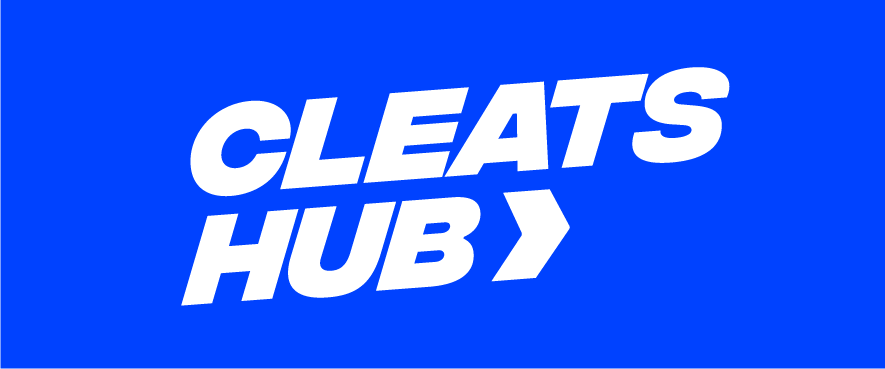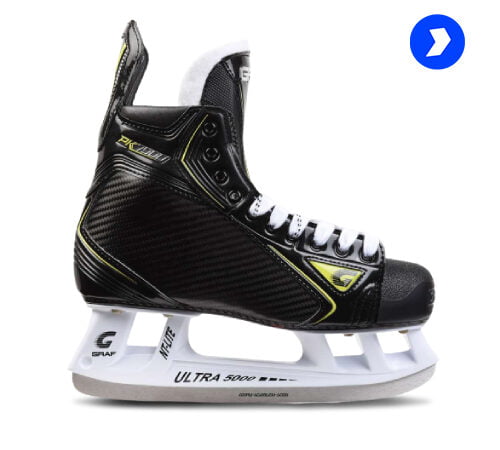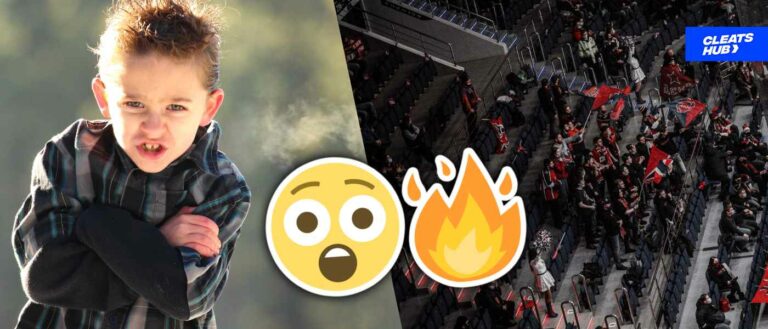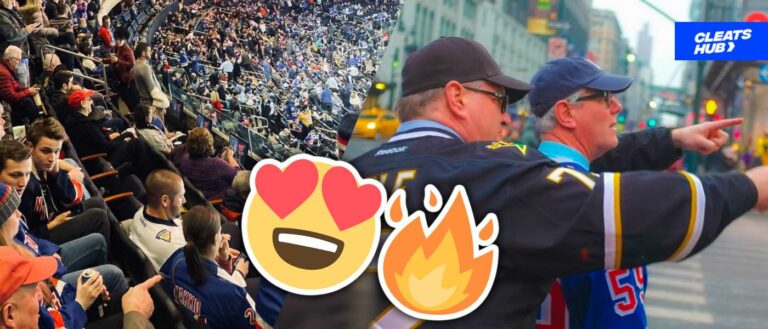What Are the Types of Penalties In Ice Hockey?
Ice Hockey, like every other sport, has its rule book from which inappropriate actions are recorded along with their penalties. For fair play, these rules must be followed and breaking any of the rules will result in a penalty.
Now, what is a penalty in Ice Hockey?
A penalty in Ice Hockey is any action or behaviour (intentional or unintentional) which isn’t acceptable in the sport and goes against its rules. Therefore, the rule book applies to them according to the intensity of the foul.
From the rule book, a penalty can be passed even when a player is not playing on the ice. In other words, misconduct while on the side-lines can invite penalties from the referees in the game.
In this article, we will be talking about 4 main points:
- The main categories of penalties in Ice Hockey.
- Actions that warrant penalties in Ice Hockey.
- Punishments linked with penalties.
- Tips to reduce chances of getting penalized.
This is going to be your guide to fully understanding penalties in the game of Ice hockey.
Main Category of Penalties in Ice Hockey
Firstly, we will be taking a look at the main categories of penalties and fouls that fall under them. Like every other game, there are several fouls (altercations) in Ice Hockey. Therefore, the penalties assessed to them, are categorized based on the severity of the actions.
Let’s take a deep dive into understanding the types of penalties and their comprehensive details. Now, here are 11 categories of penalties in ice hockey.
- Minor Penalty
- Major Penalty
- Misconduct Penalty
- Game Misconduct Penalty
- Bench Minor Penalty
- Match Penalty
- Coincidental Penalty
- Gross Misconduct Penalty
- Penalty Shot
- Goaltender Penalty
- Delayed Penalty
Minor Penalty

Minor penalties take up the most percentage of all infractions committed on the ice. It is recorded that 88% of all fouls are categorised as minor penalties. Technically, infractions that are of negligible severity are given a minor penalty (unintentional fouls or intentional with minor injury or damage).
Minor penalties are punishable by the removal of an offender for 2 minutes from the ice. While he serves the 2-minute waiting period, he is placed on the penalty bench and can not be replaced by a teammate on the ice. Consequently, this makes the team temporarily short-handed, giving the opposing team a power advantage.
However, if a goal is scored by the opposing team while the player is still in the penalty box, he will be allowed to resume on the ice. An important thing to know here is that coincidental minor penalties to both parties do not cause either of the teams to be short-handed (coincidental penalty will be discussed later on in this article).
Some other actions/plays which can cause a penalty against your side include
- Illegal contact with a player to obstruct his movement when he does not have the puck
- Swinging or hitting the stick at another player
- Stabbing the opponent player with the stick blade point
- Unnecessary roughness
- Engaging in a fight
- Shoving
- Unethical conduct of play
Common Examples of Minor Penalties in ice Hockey
Here are some hockey infractions that are assessed minor penalties include:
| Some Minor Penalty | Definition |
| Boarding | Shoving opponent violently into the sideboards |
| Charging | Speeding up excessively when charging directly at an opponent |
| Elbowing | Driving the elbow into an opponent during the game |
| Slashing | Swerving the stick strongly to hit an opponent |
| Tripping | Using the leg or hockey stick to make an opponent trip/fall |
| Hooking | Making use of a hockey stick to reduce or restrict opponent movement |
| Roughing | Unnecessary roughness during gameplay |
Major Penalty

Five-minute is the time for a significant penalty. The referee gives this penalty type after a fighting action by a player and when a minor penalty is called with the intent to injure.
Unlike minor penalties where a player can enter the game once the opponent scores a goal, the rules for major penalties are not lenient. The penalized player cannot resume on the ice until the full time has been spent on the penalty bench.
A similarity between a major and minor penalty is that it leaves the team shorthanded for the duration in which It is assessed. In instances when both sides get a major foul, none of them is shorthanded and they will be evened in manpower.
Common Offences To Get A Major Penalty
- Fighting
- Instigating a Fight
- Grasping the Facemask
- Leaving the Bench During a Fight
- Spearing
Misconduct Penalty
In this type of penalty, the offending team doesn’t get shorthanded because this penalty is called against a player, not a team. So, the penalized player will be removed from the ice for 10 minutes of actual playing time, and a substitute for that player will be allowed immediately.
A player serving the misconduct penalty will remain on the penalty bench until the play gets stopped following the end of their sentence. Some actions which cause an automatic misconduct penalty are slashing, major high sticking, spearing penalties, and cross-checking.
If any player assesses a minor and a misconduct penalty, his team will immediately make a substitution on the bench to serve the minor sentence. Meanwhile, the misconduct penalty will be served after the termination of the minor penalty. And if any player assesses a second misconduct penalty in the same game, he will be given a game misconduct penalty automatically.
Game Misconduct Penalty (Game Ejection)
This type of penalty doesn’t result in the offending team’s short handling. Instead, the penalized player or any team official gets removed from the game and is ordered to the dressing room. Penalized players will be unable to continue that game and will be reported to the concerned member league for further action.
After the removal of the player, just like in Misconduct Penalties, a substitution will be made immediately. In addition, 10 minutes on the official game report will be recorded against the penalized player for performing the game misconduct action/play.
Actions That Result In The Ejection of Players In An Ice Hockey Game
- Assessing Multiple Minors
Suppose a player assesses three minor penalties for stick infractions in the same game. As usual, he will be removed from the game and will be sent to the dressing room for the remainder of the game, and a substitution will take place for the player.
However, in this case, no time will be recorded against the penalized player on the Official Game Report.
- Attacking a Non-Playing Personnel
- Violence to Spectators
- Racism
And if a player or team official, assesses a game misconduct penalty in the last 10 minutes of regular playing time, they will be suspended from one game to seven days at any time in overtime or after the game’s conclusion.
Bench Minor Penalty
A minor bench penalty, too, is a two-minute time penalty. This type of penalty is served on the penalty bench by any player from the offending team who was on the ice at the time of the infraction. After conceding the sentence, the team is left shorthanded for two minutes from actual playing time.
The guilty player of the actual infraction serves the penalty if he gets identified by the referee during the assessment of a minor bench penalty. If the player doesn’t get identified, the coach of the penalized team will designate any player through the captain to serve a sentence on the ice at the time of the infraction.
Match Penalty

Match Penalties involve an automatic ejection of the penalized, followed by a mandatory 5 minutes penalty for any substitute. In this scenario, the penalized can’t play any game until the closure of the case by the concerned member or league.
During the assessment of this penalty type, the offending team is required to send a player to the penalty bench and must be on the ice at the infraction time to serve the five-minute time penalty.
The five-minute penalty for any substitute player will be served in full with no consideration if the opposing team scores. This is an advantage for the opposing team who will possess the advantage of a 4-on-5 uneven balance for 5 minutes.
Coincidental Penalty
Coincidental penalties are equal time-duration penalties given to members of different teams at the same stoppage of a play. In cases like this, immediate substitutions are made for the players on each team during the same stoppage of play. This results in neither team getting shorthanded.
When a coincidental penalty is given, and there is a difference in the total time penalties, penalties causing a difference will be served as an average time penalty in the usual way.
If there is any time difference in the total time penalties, it must be served by a player who was on the ice at the infraction time.
Gross Misconduct Penalty
Just like the types mentioned above, the offending team doesn’t get shorthanded as a result of this penalty as well. Also, the player is removed from the game and is ordered to the dressing room for the remainder of the game. He will also be reported to the concerned member of the league for further action.
Furthermore, 10 minutes will be recorded against the penalized player on the Official Game Report. If a player or team official assesses this type of penalty in the last 10 minutes of standard game time, they will be suspended automatically for one game to a maximum of seven days.
Penalty Shots
A penalty shot is a non-time penalty awarded when a player is fouled from behind when only the goalie is in front of him. This is also awarded when a defenseman intentionally moves the net to prevent a goal.
A penalty shot is taken by any player except the goalie, chosen by their captain, and if in any case, they don’t select a player, the Referee will designate a player.
Actions That Warrant Penalty Shot in Ice Hockey:
- When a player is fouled or tripped while on a breakaway in the attacking zone.
- When the puck carrier has no opposing players to pass other than the goaltender.
- A penalty shot is also awarded if a team is penalized for intentional illegal substitution during the last two minutes of regular playing time or overtime.
- If the goaltender or any defender deliberately removes their helmet or facial protector during the breakaway in the attacking zone.
- A penalty shot is awarded when a goalkeeper deliberately piles snow or other obstacles preventing the offending team’s player from scoring a goal.
- If any player, from defending his team throws their stick or any other object at the puck or puck carrier in the defending zone.
- A penalty shot is awarded against your team if your goalie deliberately moves the net from its position during a breakaway in the attacking zone.
Goaltender’s Penalty
This type of penalty is called on the goalie and is served by any player who was on the ice at the time of the infraction will serve in the penalty box. Goaltenders may be assessed penalties, but they’re not ordered to be sent to do a time penalty.
Any alternate goalie may replace the first goaltender after their ejection from the game. And if there is no 2nd goaltender on the playing line-up, any player will return on the Official Game Report after being given 15 minutes to put on the goalie’s equipment.
Also, the goalie will be penalised if he intentionally participates in the play when they’re beyond the centre red line. If any goaltender drop-kicks the puck after catching it, he will be penalised.
- Delayed Penalty
Time penalties can be served by only two players from the same team simultaneously. A team cannot play on the ice with less than three players and a goalie. So if that team concedes the third penalty, it would be considered a delayed penalty. The playing time of the third player won’t commence until the penalty time of one of the two penalised players elapses.
Nonetheless, the third penalised player must proceed to the penalty bench immediately but will be replaced by a substitute on the ice.
Tips To Reduce Chances of Getting Penalized in ICE Hockey

- Respect Players and Officials
Respect is a virtue of good sportsmanship. Players should respect the officials, non-playing members (eg coach) and their fellow players. To avoid misconduct penalties, players need to learn to voice their opinion to Umpires reasonably and respect their decisions.
- Restraint From Physical Attack On Other Players
Actions such as pushing, kicking, punching, headbutting, slashing and other physical attacks need to be avoided. Intentionally wanting to inflict injury to lower the momentum of your opponent does not make you a better player.
- Obey The Umpire’s Instructions
Disobeying the instructions of the umpire is a sure way to get a misconduct penalty and in some cases a match penalty. An example is crossing the side-lines into the ice during an altercation after you’ve been penalized by the officials.
- Avoid Aggressive and Extremely Desperate Play
Keeping a level head regardless of the pressure to stop a goal by all means. Desperate play causes players to make irrational decisions which will warrant a foul for the team and player.
Conclusion
Like players from other sports, it is expected that ice hockey players, as well, play responsibly. But if we are being realistic, every player can’t play every game following every rule of the game. Ice Hockey is a physical game, and you always have to keep calm and be patient.
Now that you’ve known the actions that can result in being issued a penalty, you can be more aware to avoid certain action on the rink. This is especially if you play the centre position in ice hockey, one of the toughest in the sport.
Remember that rules in ice hockey vary with different levels and leagues, but fouls and penalty durations are decided by the referee. He does this by weighing the magnitude of the offence and assessing the penalty which is deemed appropriate by the league regulation.
Furthermore, it is important to understand that these actions are judged & taken into account in your overall statistics. So it’s important to keep these actions in mind (Check our full video here):
Psstt…. The Top Performing Cleats










